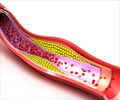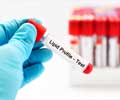Researchers have found that breathing motor vehicle emissions triggers a change in high-density lipoprotein (HDL) cholesterol.

Emission particles such as those from vehicles are major pollutants in urban settings. These particles are coated in chemicals that are sensitive to free radicals, which have been known to cause oxidation. The mechanism behind how this leads to atherosclerosis, however, has not been well understood.
In the study, the researchers found that after two weeks of exposure to vehicle emissions, mice showed oxidative damage in the blood and liver - damage that was not reversed after a subsequent week of receiving filtered air. Altered HDL cholesterol may play a key role in this damaging process, they said.
"This is the first study showing that air pollutants promote the development of dysfunctional, pro-oxidative HDL cholesterol and the activation of an internal oxidation pathway, which may be one of the mechanisms in how air pollution can exacerbate clogged arteries that lead to heart disease and stroke," said senior author Dr. Jesus Araujo, an associate professor of medicine and director of environmental cardiology at the David Geffen School of Medicine at UCLA.
Mice were exposed for a few hours, several days a week, to whole diesel exhaust at a particulate mass concentration within the range of what mine workers usually are exposed to.
After the exposures, UCLA scientists analyzed blood and tissue specimens and checked to see if the protective antioxidant and anti-inflammatory properties of HDL, known as "good" cholesterol, were still intact. They used special analytical laboratory procedures originally developed by study author Mohamad Navab at UCLA to evaluate how "good" or "bad" HDL had become. The team found that many of the positive properties of HDL were markedly altered after the air-pollutant exposure.
Advertisement
According to researchers, without HDL's ability to inhibit LDL, along with other factors, the oxidation process may run unchecked. Moreover, not only was the HDL of the mice exposed to diesel exhaust unable to protect against oxidation, but, in fact, it further enhanced the oxidative process and even worked in tandem with the LDL to promote even more oxidative damage.
Advertisement
The findings are available in the online edition of the journal Arteriosclerosis, Thrombosis and Vascular Biology, a publication of the American Heart Association, and will appear in the journal's June print edition.
Source-ANI















